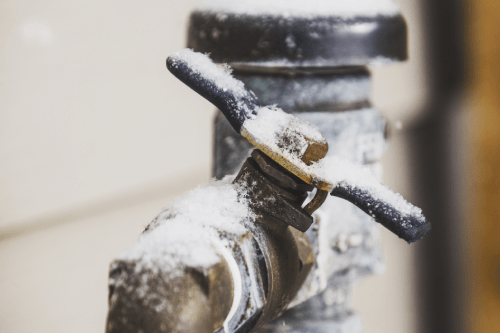Crucial Advice for Preventing Frozen Plumbing in Winter Conditions
Crucial Advice for Preventing Frozen Plumbing in Winter Conditions
Blog Article
Presented here underneath you will discover additional incredibly good details about Winter Plumbing Precautions: Preventing Frozen Pipes.

Cold weather can ruin your pipes, specifically by freezing pipelines. Here's how to prevent it from occurring and what to do if it does.
Introduction
As temperature levels decrease, the danger of frozen pipes increases, potentially leading to costly repairs and water damages. Understanding exactly how to avoid frozen pipes is essential for property owners in cold climates.
Avoidance Tips
Protecting susceptible pipes
Cover pipes in insulation sleeves or use warmth tape to secure them from freezing temperatures. Concentrate on pipes in unheated or external areas of the home.
Home heating methods
Maintain interior rooms appropriately warmed, specifically areas with plumbing. Open up cupboard doors to permit cozy air to flow around pipes under sinks.
How to recognize icy pipes
Seek lowered water flow from taps, uncommon odors or noises from pipes, and noticeable frost on subjected pipes.
Long-Term Solutions
Structural modifications
Take into consideration rerouting pipelines far from outside walls or unheated areas. Add added insulation to attics, basements, and crawl spaces.
Upgrading insulation
Purchase high-grade insulation for pipelines, attic rooms, and walls. Appropriate insulation aids preserve constant temperatures and decreases the danger of icy pipelines.
Securing Outdoor Pipes
Yard tubes and exterior faucets
Disconnect and drain yard tubes prior to winter months. Mount frost-proof spigots or cover outdoor taps with protected caps.
Understanding Icy Pipes
What causes pipelines to freeze?
Pipelines freeze when exposed to temperatures listed below 32 ° F (0 ° C) for extended periods. As water inside the pipes freezes, it expands, taxing the pipe walls and potentially creating them to rupture.
Risks and damages
Icy pipelines can bring about water disruptions, residential or commercial property damage, and pricey fixings. Burst pipes can flood homes and cause comprehensive structural damages.
Indicators of Frozen Water Lines
Determining frozen pipelines early can stop them from rupturing.
What to Do If Your Pipes Freeze
Immediate activities to take
If you presume icy pipelines, keep faucets available to alleviate pressure as the ice melts. Use a hairdryer or towels soaked in hot water to thaw pipes gradually.
Verdict
Protecting against frozen pipes requires aggressive steps and quick responses. By recognizing the causes, indicators, and safety nets, house owners can shield their plumbing during winter.
5 Ways to Prevent Frozen Pipes
Drain Outdoor Faucets and Disconnect Hoses
First, close the shut-off valve that controls the flow of water in the pipe to your outdoor faucet. Then, head outside to disconnect and drain your hose and open the outdoor faucet to allow the water to completely drain out of the line. Turn off the faucet when done. Finally, head back to the shut-off valve and drain the remaining water inside the pipe into a bucket or container. Additionally, if you have a home irrigation system, you should consider hiring an expert to clear the system of water each year.
Insulate Pipes
One of the best and most cost-effective methods for preventing frozen water pipes is to wrap your pipes with insulation. This is especially important for areas in your home that aren’t exposed to heat, such as an attic. We suggest using foam sleeves, which can typically be found at your local hardware store.
Keep Heat Running at 65
Your pipes are located inside your walls, and the temperature there is much colder than the rest of the house. To prevent your pipes from freezing, The Insurance Information Institute suggests that you keep your home heated to at least 65 degrees, even when traveling. You may want to invest in smart devices that can keep an eye on the temperature in your home while you’re away.
Leave Water Dripping
Moving water — even a small trickle — can prevent ice from forming inside your pipes. When freezing temps are imminent, start a drip of water from all faucets that serve exposed pipes. Leaving a few faucets running will also help relieve pressure inside the pipes and help prevent a rupture if the water inside freezes.
Open Cupboard Doors
Warm your kitchen and bathroom pipes by opening cupboards and vanities. You should also leave your interior doors ajar to help warm air circulate evenly throughout your home.

As a reader about How To Avoid Freezing Pipes, I think sharing that excerpt was smart. Appreciated our article? Please quickly share it. Let somebody else find it. I am grateful for being here. Come back soon.
Instant Quote Report this page